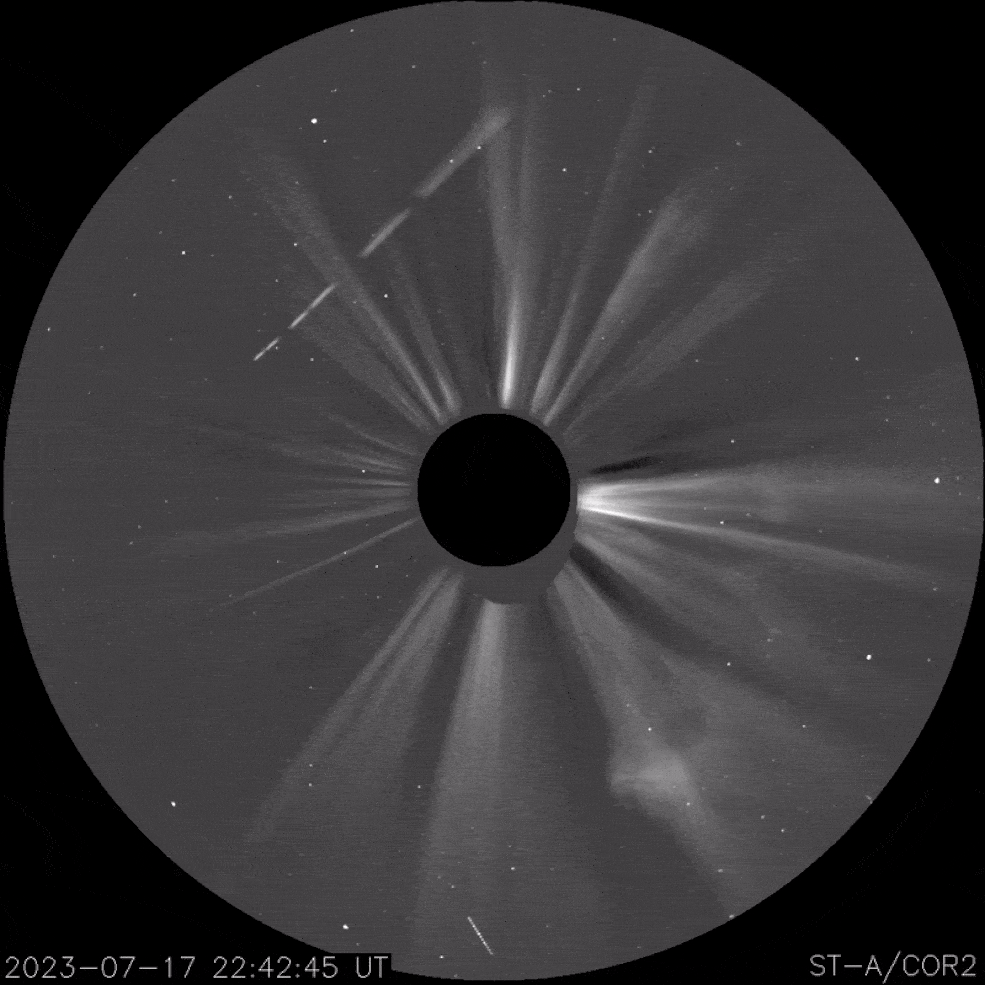Discovery of the most extreme solar storm to have ever hit Earth ☀️
Follow us on Google News (click on ☆)

A team from the University of Oulu in Finland developed an innovative model to interpret radiocarbon data under glacial conditions. Their findings reveal a solar storm 500 times more powerful than the 2003 Halloween solar storm.
Solar storms disrupt Earth's magnetic field and inject charged particles into the atmosphere. These particles increase levels of carbon 14, a radioactive isotope used to date organic materials. A significant spike in carbon 14 was detected in fossilized tree rings, revealing the occurrence of this major event.
The study dates this solar storm between January and April in 12,350 BCE, at the end of the last Ice Age. Mammoth hunters in Europe likely witnessed spectacular auroras as a direct result of this event.
Compared to the five other solar storms identified through tree rings, this one stands out for its intensity. It deposited about 18% more charged particles into the atmosphere than the 775 CE storm, previously the most powerful known.

A coronal mass ejection observed by NASA's STEREO-A space telescope in July 2023.
Credit: NASA/STEREO-A/SECCHI
A storm of this magnitude today could cause major disruptions to satellites, power grids, and communication systems. Recent events, like the 2024 Gannon storm, highlight the vulnerability of our infrastructure to the Sun's whims.
This research, published in Earth and Planetary Sciences Letter, opens new perspectives for studying extreme solar storms and their impact on climate and past civilizations. It also underscores the importance of preparing our technological systems to withstand such events.
How do solar storms affect carbon 14?
Solar storms send streams of charged particles toward Earth. These particles interact with nitrogen in the atmosphere to produce carbon 14, a radioactive isotope.
Carbon 14 is then absorbed by living organisms, including trees. By measuring carbon 14 concentrations in tree rings, scientists can identify spikes corresponding to past solar storms.
This method allows precise dating of these events and assessment of their intensity, providing a unique window into the history of Sun-Earth interactions.
Why are solar storms a threat to modern technology?
Solar storms generate geomagnetically induced currents that can damage power transformers. These currents disrupt electrical grids, potentially over large regions.
Orbiting satellites are also vulnerable. Charged particles can damage their electronic components and alter their trajectories by changing atmospheric density.
Finally, navigation and communication systems, including GPS and radios, can be severely affected. This highlights the need to develop more resilient technologies to withstand the Sun's unpredictability.